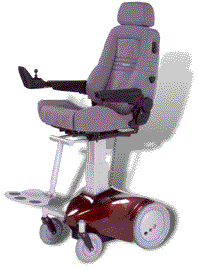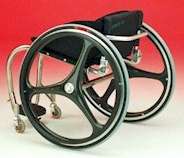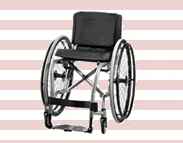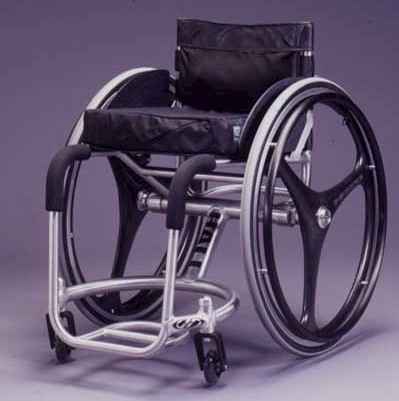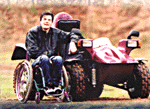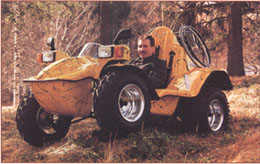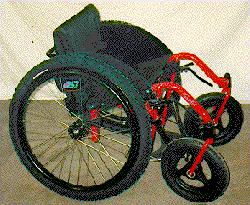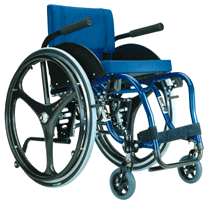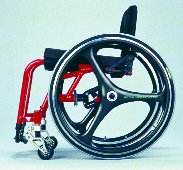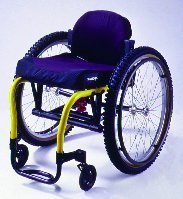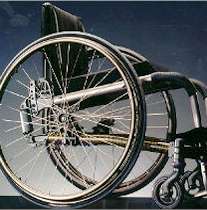A CELEBRATION OF WHEELS: INNOVATION
INNOVATION ![]() IS
IS
TRANSFORMING MOBILITY
. . . for those who roll instead of walk:
After years of new ideas in sports-oriented equipment like the racing machine at right,
there's finally a broader change coming to make a difference in daily mobility:
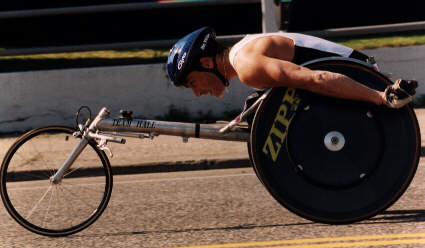
|
The stylish 11-pound titanium machine above is the product of Canadian craftsmen at the Better Made Wheelchair Company in Red Deer, Alberta.
|
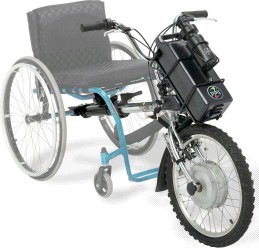 A new British product, the PDQ PowerTrike, is a rechargeable, battery-
powered front-end attachment for almost any wheelchair that allows the user to travel 15
to 20 miles at a top speed of 11 mph. Find out more at the
PDQ Mobility website.
A new British product, the PDQ PowerTrike, is a rechargeable, battery-
powered front-end attachment for almost any wheelchair that allows the user to travel 15
to 20 miles at a top speed of 11 mph. Find out more at the
PDQ Mobility website.JOHNSON & JOHNSON's IBOT, shown below, after extensive test trials by the FDA, is a revolutionary gyro-controlled stair-climbing, standing wheelchair designed by award-winning inventor Dean Kamen .
Though the first generation model is awkward- looking -- and very expensive-- IBOT may have enormous potential.
J&J
bought and tried to market a sleek but heavy "manual-looking" power-assist chair, the iGLIDE, but withdrew it after a year or so, "to focus on iBOT".
Britain's Cyclone markets a new Swedish-built All-Terrain Cart, above, that combines dunebuggy and wheelchair, for those who want a motorized off-road experience but have limited mobility. Even quadriplegics can drive this one.
KUSCHALL's rugged TERRATREK, shown at left, is one of several go-anywhere, do-anything innovations in the self-propelled off-road category.
Less glamorous, but no less useful: some chair users want or need extra leverage for pushing their chairs uphill, or braking them when going downhill. Check out
The Wijit, an innovative wheel control and steering device, shown below.
German engineers have come up with
several devices to help wheelchair users enjoy greater mobility.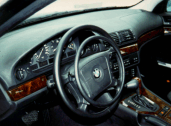 One is the
Kempf
Accelerator Ring
One is the
Kempf
Accelerator Ring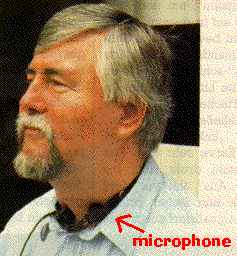 for automobiles, far right, an interesting departure from traditional hand
controls used by paraplegics. The other device is the
Katalavox
voice-activated control for powerchairs, using a throat-mounted
microphone.
for automobiles, far right, an interesting departure from traditional hand
controls used by paraplegics. The other device is the
Katalavox
voice-activated control for powerchairs, using a throat-mounted
microphone.
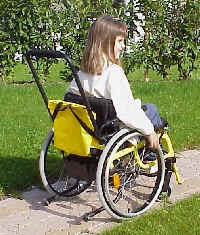
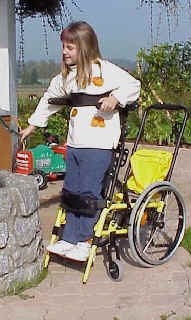 The
LEVO standing chair
from Switzerland rolls like a manual rigid-frame everyday chair, then rises
to the
The
LEVO standing chair
from Switzerland rolls like a manual rigid-frame everyday chair, then rises
to the 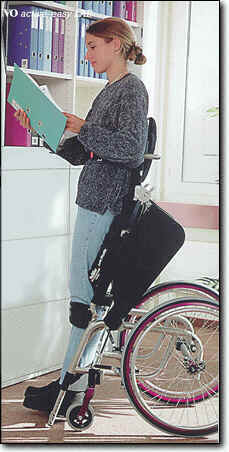 occasion to lift its user to eye-level for
stable stand-up tasks through simple gas-assisted
gears. It won't climb stairs like the IBOT, but it raises the bar
for livability in everyday chairs that offer an elegant solution to
a recurring daily need.
occasion to lift its user to eye-level for
stable stand-up tasks through simple gas-assisted
gears. It won't climb stairs like the IBOT, but it raises the bar
for livability in everyday chairs that offer an elegant solution to
a recurring daily need.
And here's the
German-built Tunkers
Butler, a clever machine for those whose work 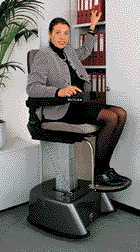 requires a lot of up and down activity -- a combination power chair
and lift that moves horizontally and vertically, mounted on a
very small base that allows the user to get close to desks,
bookshelves and counters.
requires a lot of up and down activity -- a combination power chair
and lift that moves horizontally and vertically, mounted on a
very small base that allows the user to get close to desks,
bookshelves and counters.